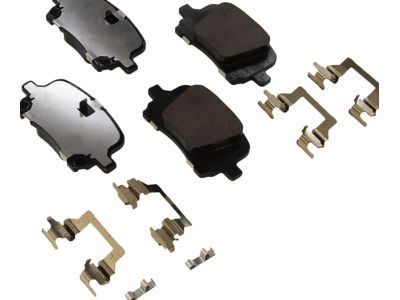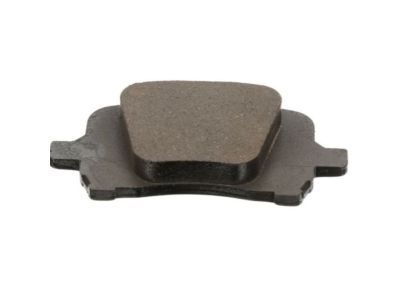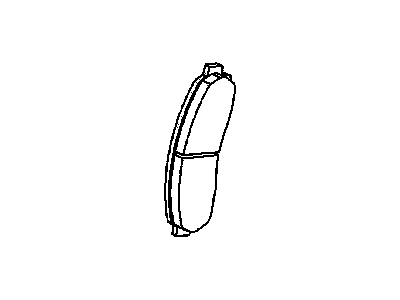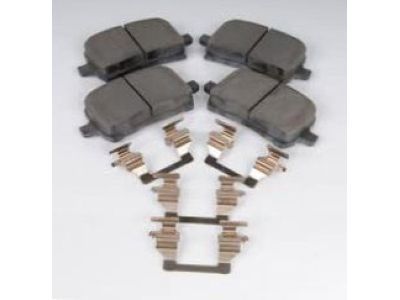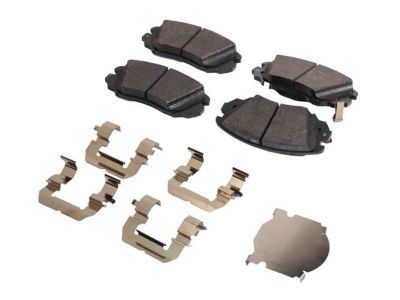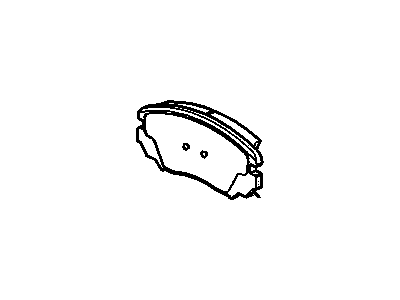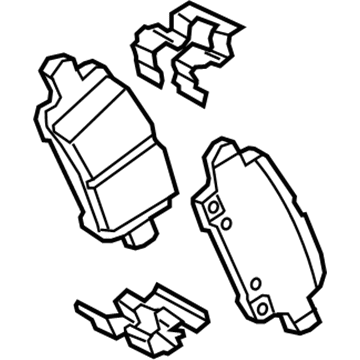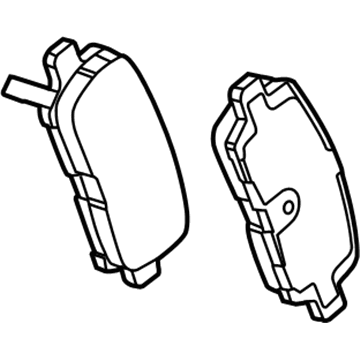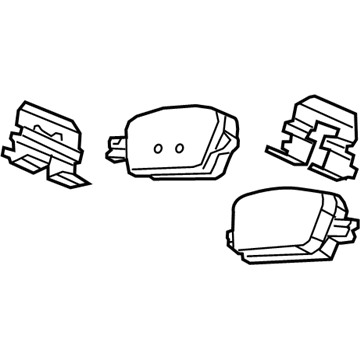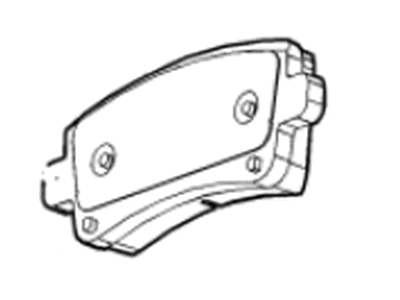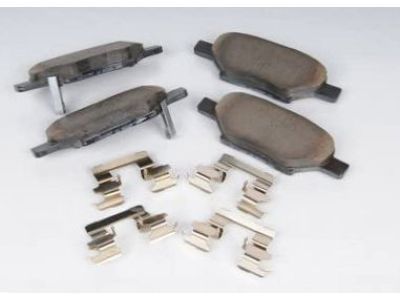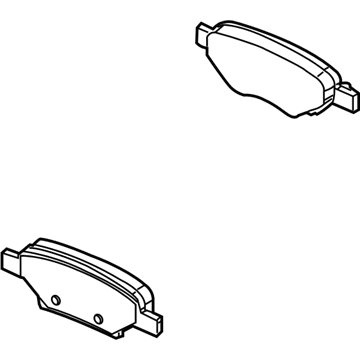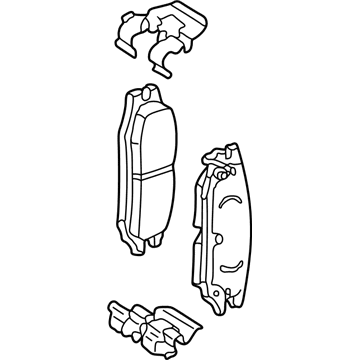
My Garage
My Account
Cart
Genuine Chevrolet Malibu Brake Pad
Disc Brake Pad Set- Select Vehicle by Model
- Select Vehicle by VIN
Select Vehicle by Model
orMake
Model
Year
Select Vehicle by VIN
For the most accurate results, select vehicle by your VIN (Vehicle Identification Number).
18 Brake Pads found
Chevrolet Malibu Pad Kit, Front Disc Brake
Part Number: 22820406$75.20 MSRP: $147.87You Save: $72.67 (50%)Ships in 1-2 Business DaysChevrolet Malibu Pad Kit,Front Disc Brake
Part Number: 22731037$76.89 MSRP: $139.79You Save: $62.90 (45%)Ships in 1-2 Business DaysChevrolet Malibu Pad Kit, Front Disc Brk
Part Number: 84233325$80.87 MSRP: $159.04You Save: $78.17 (50%)Chevrolet Malibu Pad Kit, Front Disc Brk
Part Number: 85127904$166.05 MSRP: $323.69You Save: $157.64 (49%)Ships in 1-2 Business DaysChevrolet Malibu PAD KIT-FRT DISC BRK
Part Number: 85129514$86.88 MSRP: $169.36You Save: $82.48 (49%)Ships in 1-2 Business DaysChevrolet Malibu PAD KIT-RR DISC BRK
Part Number: 85143237$77.82 MSRP: $151.70You Save: $73.88 (49%)Ships in 1-2 Business DaysChevrolet Malibu Pad Kit, Front Disc Brk
Part Number: 85127895$99.19 MSRP: $195.06You Save: $95.87 (50%)Ships in 1-2 Business DaysChevrolet Malibu Pad Kit, Front Disc Brake
Part Number: 13312895$159.50 MSRP: $313.65You Save: $154.15 (50%)Ships in 1-2 Business DaysChevrolet Malibu Pad Kit, Rear Disc Brk
Part Number: 85143526$83.82 MSRP: $163.41You Save: $79.59 (49%)Ships in 1-2 Business DaysChevrolet Malibu PAD KIT-RR DISC BRK
Part Number: 85127903$110.10 MSRP: $303.94You Save: $193.84 (64%)Ships in 1-3 Business DaysChevrolet Malibu Pad Kit, Rear Disc Brk
Part Number: 23411909$83.42 MSRP: $164.03You Save: $80.61 (50%)Chevrolet Malibu PAD KIT-FRT DISC BRK
Part Number: 85134423$80.51 MSRP: $154.63You Save: $74.12 (48%)Ships in 1-2 Business DaysChevrolet Malibu Pad Kit, Rear Disc Brk
Part Number: 85143529$83.82 MSRP: $163.41You Save: $79.59 (49%)Ships in 1-2 Business DaysChevrolet Malibu Pad Kit, Front Disc Brk
Part Number: 84775617$84.67 MSRP: $153.93You Save: $69.26 (45%)Ships in 1-3 Business DaysChevrolet Malibu Pad Kit, Front Disc Brk
Part Number: 84775618$84.67 MSRP: $153.93You Save: $69.26 (45%)Ships in 1-3 Business Days
Chevrolet Malibu Brake Pad
Cars have always had brake pads as parts of their braking systems which helps to stop the car by sticking onto the brake rotors. Usually they consist of metals and various synthetic materials that enable the brake pads to retain their stability at high working temperatures, which can reach up to 400 Fahrenheit. Aluminium based friction material continuously gets worn, and has to be replaced from time to time even as wear indicators remind drivers when the pads are worn out such that they cannot generate the optimum braking force that is needed on the vehicle. Various sorts of brake pads have been utilised in Chevrolet Malibu models together with non-metallic, semi-metallic, fully metallic, and ceramic brake pad kinds, ceramic brake pads are the most effective as they have lower friction, better operational wear resistance, and generate minimal noise. It is important to do the maintenance of the brake pads frequently especially replacing the hardware components associated with it such as clips and springs. Concisely, Chevrolet Malibu brake pads mechanical system play critical role in ensuring safety and efficiency of the vehicle.
Each OEM Chevrolet Malibu Brake Pad we offer is competitively priced and comes with the assurance of the manufacturer's warranty for the part. Furthermore, we guarantee the speedy delivery of your orders right to your doorstep. Our hassle-free return policy is also in place for your peace of mind.
Chevrolet Malibu Brake Pad Parts Questions & Experts Answers
- Q: How to replace the front brake pads on Chevrolet Malibu?A:To remove the front brake pads, set the bike on the stand, open the brake fluid resin cap and put a syringe or a suction gun to the reservoir and suck the fluid down to a half tank. Slightly unscrew the wheel lugs, lift the front part of the car, and put it on jackstands locking the wheels at the other end. Lift off the wheels so that you can view the Brake Disc; were there to be need of machining, then you should further take off the disc so that can have access to the pads. Disconnect the brake caliper and use brake system cleaner to clean the caliper and install it back with the help of a drain pan to collect the accumulated matters. Loosen and take out the caliper mounting bolts with hand tools but hold the guide pin with an open end wrench not to turn round. Do not sever the Brake Line, unless replacing the caliper, and if the caliper is removed but the pads are not replaced the position of the inner and outer pad must be recorded. Scan brake lines and fittings and change any broken clamp. Insert a large C-clamp to force the piston down into the caliper and tight on it and then remove the anti-rattle springs and brake pads; it is important to look at the position of the wear sensors. Before refitting the guide pins should be cleaned and lubricated and should be refitted in such a way that the pad containing the wear sensor is placed in the correct manner and new springs/ retainers are fixed. Regarding the rear brake pads remove the brake fluid, support the vehicle, and, if available, engage the EPB service mode. Before removing the caliper clean it and make sure it is properly supported. There are new brake pads and their support plates as well the anti-seize compound in the metal to metal contact areas shall be fitted. It is recommended that the caliper piston should be rotated fully inward with a help of a caliper piston retraction tool, so that the notches face the inner pins on the brake pad. Remove the dust caps from the guide pins and clean and lubricate the same guide pins before mounting the caliper back over the pads to tighten the mount bolts. Last but not the least, apply the brake pedal for the pads to come in contact with the disc and check the brake fluid level and put some if required. If the vehicle being serviced has an Electronic Parking Brake, set it right for the new brake pads.
Related Chevrolet Malibu Parts
Browse by Year
2024 Brake Pad 2023 Brake Pad 2022 Brake Pad 2021 Brake Pad 2020 Brake Pad 2019 Brake Pad 2018 Brake Pad 2017 Brake Pad 2016 Brake Pad 2015 Brake Pad 2014 Brake Pad 2013 Brake Pad 2012 Brake Pad 2011 Brake Pad 2010 Brake Pad 2009 Brake Pad 2008 Brake Pad 2007 Brake Pad 2006 Brake Pad 2005 Brake Pad 2004 Brake Pad 2003 Brake Pad 2002 Brake Pad 2001 Brake Pad 2000 Brake Pad 1999 Brake Pad 1998 Brake Pad 1997 Brake Pad
